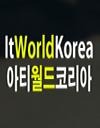HTLM5 태그 정리
<header> TAG
Header태그는 여러번 사용할 수 있으며, body태그 안에서 사용이 가능합니다. <head>태그는 <html> 사이에 들어가야 하며, 사용 또한 다릅니다. 문서 내에서의 실제 타이틀을 나타낼 때 사용이 됩니다.
<hgroup> TAG
제목과 그와 관련된 부제목을 묶어주는 기능.
In this part of the useful HTML5 features series we are going to present you the new semantic tags that were introduced with HTML5 (most of them). We have provided a simple demo of a page that uses the HTML5 semantic tags.
You usually insert into a header one or more headings ( <h1> to <h6> ) , some sort of a logo or information about the author of the post/article/document that will be discussed below it.
<nav> TAG
<nav>는 어느 위치에 와도 상관이 없으며, <header> <footer> <aside> 등 어디에서든지 사용이 가능합니다.
We include another new element which is the <nav> – it is best used for the primary navigation(s) of the page. It would not be a good idea to enclose every distant anchor on your webpage with the <nav > tag.
<aside> TAG
본문의 내용을 표시하고 남은 부분들을 표시하기 위해서 사용합니다.
Next, we have the <aside> tag which indicates sidebars or content that is related to the DOM location where it is being placed but it is not essential to it. For example, if your readers are reading an article on a page, you can use it to show the user additional information about the article such as references, highlights from it, interesting facts and even to show the user related articles.
You can also see the use of <figure> . You should use it for code snippets, images, diagrams, charts and other visual content that is related to the place where it is placed but in the same time the enclosing content should still make sense without that figure . Inside the <figure> tag you can nest other tags such as <img> and you can add a caption which explains the figure through the <figcaption> element.
<article> TAG
웹 페이지 상에서 실제 내용을 의미하고, 다른 곳에 배포하거나 재사용할 수 있으며, 검색엔진에서는 article에 있는 내용은 배포할 수 있는 것으로 인식하게 됩니다.
<seciton> TAG
웹 컨텐츠들을 그룹으로 묶어 주는 역할을 하며, 재배포 할 수 없습니다. <section>으로 묶에서 다시 <article>로 다시 묶을 수 있다. <section>안에서 다시 <section>태그를 사용하는 것은 가능하다.
HTML1(1991)으로 시작되어, HTML2(1995), HTML3(1997.1), HTML4(1997.12)를 거쳐서 HTML5로 개발되었다.
H.
HTML5은 HTML4의 제한적인 기능 때문에 액티브X, 자바스크립트, 플러그인 등으로 웹을 구현하였고, 이러한 것들을 플러그인 없이 멀티미디어 컨텐츠를 실행하기 위해서 등장하였다. (하지만 현재도 주로 사용되는 것들은 HTML4이다)
웹표준은 같은 사이트라도 브라우저마다 다르게 보이게 되는데, 이는 표준이 없이 작성이 되었기 때문이다. HTML5의 특징은 자바스크립트, CSS, HTML이 분리되지 않고 통합된 체제로 이루어진 것을 의미한다. (HTML5는 자바스크립트, CSS3, HTML5 태그 모두를 의미한다)
HTML5특징
- HTML5는 동영상 재생이 가능하다.
- 2차원 벡터가 가능하다
- 서버와 소켓 통신이 가능하다.
- GPS장치접근, 스마트폰
- 오프라인 상태에서도 작업이 가능하다.
- 시멘틱 웹을 구현이 가능하다.
새로운 태그들
section, article, aside: 간단한 위젯 프로그램, 사이드바, hgroup: 제목과 부제목, header: 본문에 있는 머리부분, footer:페이지 가장 하단의 안내, nav: 네비게이션 요소를 표현, figure: 그림, 비디오 등의 캡션, figcaption.
audio, video, embed, mark:택스트 형광펜, progress:진행바, meter, time, ruby: 미주, 각주 등, canvas, command, details, datalist, keygen: 양식을 form으로 보낼 때 하는 key를 생성, output.
변경된 태그들
a, address, b, hr, i, menu, small, strong : 더 강화되거나 내용이 확장된 태그들
중단된 태그들
basefont, big, center, font, frame, frameset, noframe, s, strike, tt, u
'홈페이지제작 > HTML' 카테고리의 다른 글
| [HTML 강좌] iframe 태그학습 구조<iframe> </iframe> (0) | 2017.08.31 |
|---|---|
| html 강좌 div 태그에 대한 학습 홈페이지 레이아웃 (0) | 2017.08.31 |
| 홈페이지 제작 시 필요한 HTML 명령어 모음 (1) | 2017.06.26 |
| html주석처리는 왜하는가 ? (0) | 2017.05.13 |
| HTML5와 CSS를 이용한 홈페이지제작 (0) | 2017.04.27 |


